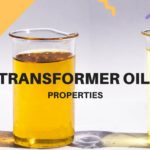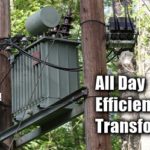This article covers transformer impedance testing, one of the acceptances tests for new transformers, and a method for routine testing. The results of this test should compare directly to the manufacturer’s datasheet.
Related: Percentage Impedance of Transformer
Application of Transformer Impedance Test
The Transformer Impedance Test locates problems within the transformer winding.
The tests in this task procedure apply to
- Single-phase transformers
- Three-phase two-winding transformers with and without buried tertiaries
- Three-phase three-winding transformers
- Three-phase autotransformers with and without buried tertiaries
The results of impedance tests performed in the field should be within 5% of manufacturer’s data values. Beyond this range should be investigated by further tests.
Tools for Impedance Test
The following tools are used to conduct Transformer Impedance Test
- RMS voltmeter
- RMS ammeter, or two multifunction meters with 0.5% accuracy
- 0-105 V ac variable power supply
- 20 A 120V, single-phase sources
- Jumpers of various lengths
Transformer Impedance Test Procedure
As mentioned above transformer impedance testing procedure covers single-phase transformers, three-phase two-winding transformers with and without burred tertiary windings, and three-phase two-winding autotransformers.
The test procedure is explained below.
- Set the no-load tap changer to the nameplate voltage before proceeding with the test.
- Short-circuit the secondary terminals together and connect the voltmeters and ammeters to the high-side bushings.
- Connect the variable power supply and slowly increase the voltage to 120 volts. Watch for the overcurrent range of the ammeter, change the scale if necessary.
- Record the voltage, current, and the combination of high-side bushings (eg HI-H2, HI-H3, or H2-H3).
- Disconnect the variable power supply and move the power leads to the next high-side (or low-side) bushing combination. Repeat Steps 3, 4, and 5 until all combinations have been recorded.
- Calculate the percentage impedance.
Impedance Test of Three Phase Three Winding Transformer
The procedure for transformer impedance measurement of three-phase three-winding transformers and three-phase three-winding autotransformers is the same as for two-winding transformers, except that there is a total of nine sets of measurements instead of three.
For 3-phase three-winding transformers, three measurements are made by the short circuit test.
Zps = Leakage impedance measured rn the primary with the secondary short-circuited and the tertiary open.
Zpt = Leakage impedance measured in the primary with the secondary open and the tertiary short-circuited.
Zst = Leakage impedance measured in the secondary with the primary open and the tertiary short-circuited.
- Set the no-load tap changer to the nameplate voltage before proceeding with the test.
- Short-circuit the secondary terminals together and connect the voltmeters and ammeters to the high-side bushings
- Connect the variable power supply and slowly increase the voltage to 120 volts. Watch for the overcurrent range of the ammeter, change the scale if necessary.
- Record the voltage, current, and the combination of high-side bushings (eg HI-H2, HI-H3, or H2-H3).
- Disconnect the variable power supply and move the power leads to the next high-side (or low-side) bushing combination. Repeat Steps 3, 4, and 5 until all combinations have been recorded.
- Calculate the percentage Impedance. The measurements must refer to the high side and the same MVA base.
Calculation of Percentage Impedance
Z% for single phase transformers
![]()
Z% for 3-phase two winding transformers and auto transformers
![]()
Z% for 3-phase three-winding transformer and auto transformers
![]()
For Zst
![]()
NOTE: MVA and KV11 refer to the primary side of transformers.







Hi I want to calculate %impedance of three phase transfomer. I/P V is 208VAC (Ph-Ph), I/P Current 230A, kVA rating is 63kVA, Output is 480VAC (Ph-Ph), O/P Current 100A. What tester should I use to increase voltage 0 to required voltage to flow rated current in shorted secondary? If %impedance is 4% then I would need variac which gives me 230A at 8.32V which is hard to find. Please help me understand what tester is used in industry to do this testing.